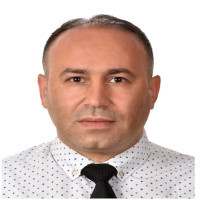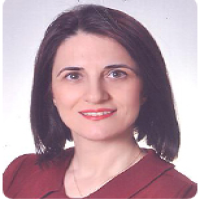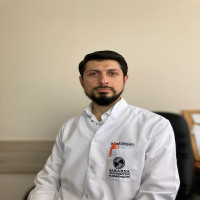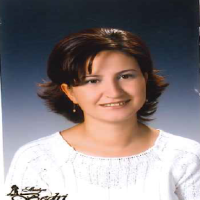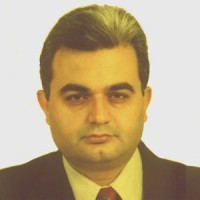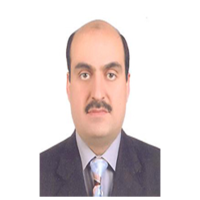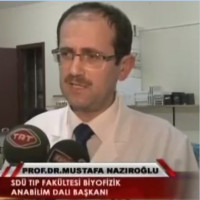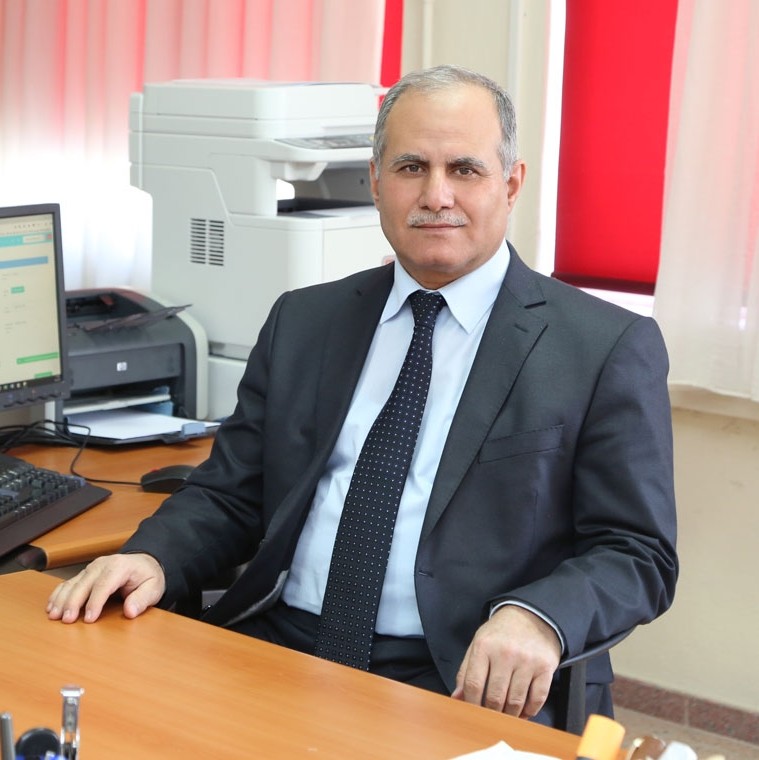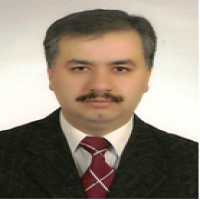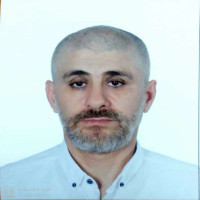Research Article
Review
Issue Editorial Board

Medical Biology, Molecular Biology, Genetics

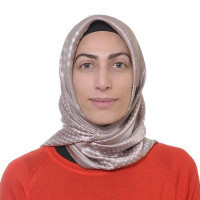
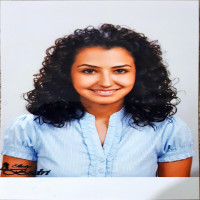


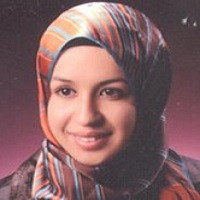




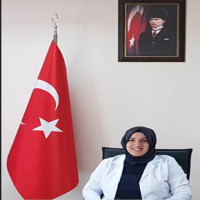

Assoc. Dr. Ahmet KARA graduated from Kocaeli University Faculty of Medicine in 2010. After completing his specialty education at Kocaeli University Faculty of Medicine, Otorhinolaryngology Department, in 2015, he started to work at Sakarya Training and Research Hospital. He joined the academic staff of Sakarya University in 2017. He was entitled to receive the title of Associate Professor in 2020 and served as the Deputy Dean of Sakarya University Faculty of Medicine between 01.10.2021 and 01.10.22. He continues to work in Sakarya University Faculty of Medicine, Department of Otorhinolaryngology.








Issue Reviewers

2011 yılında İstanbul Tıp Fakültesinden mezun oldu. 2 yıl acil servis hekimi olarak görev yaptı, sonrasında 9 yıl aile hekimliği yaptı. İstanbul Üniversitesi İstanbul Tıp Fakültesi Halk Sağlığı Anabilim Dalı’nda doktorasını tamamladı. Halen İstanbul Üniversitesi AUZEF Felsefe Bölümü’nde lisans eğitimini sürdürmektedir. 2022 yılından itibaren Sakarya Üniversitesi Tıp Fakültesi Halk Sağlığı Anabilim Dalı’nda Dr. Öğr. Üyesi olarak görev yapmaktadır. Aynı kurumda dekan yardımcısı olarak idari görevini sürdürmektedir. Sağlıkta insan gücü planlama, dijital epidemiyoloji, mekansal epidemiyoloji, sağlıkta büyük veri, salgın modelleme alanlarında akademik çalışmalarını sürdürmektedir. Türkiye COVID19 Pandemi İzlem Ekranı (TURCOVID19) projesini yönetmektedir. Ctf Panorama Dergisi, Cerrahpaşa ve Çapa Genç Tıbbiyeliler Platformu, İyilikhane Çocuk Derneği, Sağlıkta Hamilik Topluluğu ve Halk Sağlığı Düşünce ve İnovasyon Topluluğu kurucu üyesidir. İSAR Tıp ve Ahlak Çalışma Grubu, Sosyal Araştırmalar Derneği üyesidir. GENÇ dergisinde aylık olarak sosyal içerikli yazılar yazmakta, belirli aralıklarla Anadolu Ajansı’nda analiz yazıları yazmaktadır. Türkiye Yeşilay Cemiyeti Bağımlılıkla Mücadele Programı’nda Sağlıklı Yaşam modülüne danışmanlık yapmaktadır.














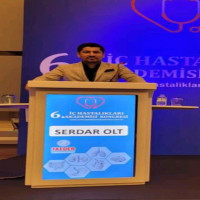


 Web
Web
.
Aim & Scope
The scientific journal, Online Türk Sağlık Bilimleri Dergisi [Online Turkish Journal of Health Sciences (OTJHS)], aims to share scientific studies performed on national and international issues in health sciences with scientists, experts, and the public.
The scope of the journal includes high-quality clinical and experimental research articles, reviews, case reports and short communications in the fields of Medicine, Pharmacy, Dentistry, Clinical Nursing and Midwifery Sciences.
Scopes:
Biological Sciences > Biochemistry and Cell Biology > Biochemistry and Cell Biology (Other)
Biomedical and Clinical Sciences > Nutrition and Dietetics > Nutrigenomics and Personalised Nutrition
Biomedical and Clinical Sciences > Nutrition and Dietetics > Food Nutritional Balance
Biomedical and Clinical Sciences > Nutrition and Dietetics > Public Health Nutrition
Biomedical and Clinical Sciences > Nutrition and Dietetics > Clinical Nutrition
Biomedical and Clinical Sciences > Nutrition and Dietetics > Sport and Exercise Nutrition
Biomedical and Clinical Sciences > Surgery > Pediatric Surgery
Biomedical and Clinical Sciences > Surgery > Thoracic Surgery
Biomedical and Clinical Sciences > Surgery > Cardiovascular Surgery
Biomedical and Clinical Sciences > Paediatrics > Pediatric Urology
Biomedical and Clinical Sciences > Dentistry > Oral and Maxillofacial Surgery
Biomedical and Clinical Sciences > Dentistry > Oral and Maxillofacial Radiology
Biomedical and Clinical Sciences > Dentistry > Paedodontics
Biomedical and Clinical Sciences > Dentistry > Dental Materials and Equipment
Biomedical and Clinical Sciences > Dentistry > Dental Therapeutics, Pharmacology and Toxicology
Biomedical and Clinical Sciences > Dentistry > Endodontics
Biomedical and Clinical Sciences > Dentistry > Craniofacial Biology
Biomedical and Clinical Sciences > Dentistry > Oral Implantology
Biomedical and Clinical Sciences > Dentistry > Oral Medicine and Pathology
Biomedical and Clinical Sciences > Dentistry > Orthodontics and Dentofacial Orthopaedics
Biomedical and Clinical Sciences > Dentistry > Special Needs Dentistry
Biomedical and Clinical Sciences > Dentistry > Periodontics
Biomedical and Clinical Sciences > Dentistry > Prosthodontics
Biomedical and Clinical Sciences > Dentistry > Restorative Dentistry
Biomedical and Clinical Sciences > Pharmacology and Pharmaceutical Sciences > Pharmaceutical Biochemistry
Biomedical and Clinical Sciences > Pharmacology and Pharmaceutical Sciences > Pharmacogenomics
Biomedical and Clinical Sciences > Pharmacology and Pharmaceutical Sciences > Pharmaceutical Microbiology
Biomedical and Clinical Sciences > Pharmacology and Pharmaceutical Sciences > Pharmaceutical Toxicology
Biomedical and Clinical Sciences > Pharmacology and Pharmaceutical Sciences > Clinical Pharmacology and Therapeutics
Biomedical and Clinical Sciences > Pharmacology and Pharmaceutical Sciences > Basic Pharmacology
Biomedical and Clinical Sciences > Pharmacology and Pharmaceutical Sciences > Medical Pharmacology
Biomedical and Clinical Sciences > Pharmacology and Pharmaceutical Sciences > Toxicology
Biomedical and Clinical Sciences > Ophthalmology and Optometry > Vision Science
Biomedical and Clinical Sciences > Ophthalmology and Optometry > Ophthalmology
Biomedical and Clinical Sciences > Ophthalmology and Optometry > Optometry
Biomedical and Clinical Sciences > Cardiovascular Medicine and Haematology > Haematology
Biomedical and Clinical Sciences > Cardiovascular Medicine and Haematology > Cardiology
Biomedical and Clinical Sciences > Cardiovascular Medicine and Haematology > Respiratory Diseases
Biomedical and Clinical Sciences > Clinical Sciences > Emergency Medicine
Biomedical and Clinical Sciences > Clinical Sciences > Anaesthesiology
Biomedical and Clinical Sciences > Clinical Sciences > Infectious Diseases
Biomedical and Clinical Sciences > Clinical Sciences > Dermatology
Biomedical and Clinical Sciences > Clinical Sciences > Endocrinology
Biomedical and Clinical Sciences > Clinical Sciences > Gastroenterology and Hepatology
Biomedical and Clinical Sciences > Clinical Sciences > Chest Diseases
Biomedical and Clinical Sciences > Clinical Sciences > Internal Diseases
Biomedical and Clinical Sciences > Clinical Sciences > Otorhinolaryngology
Biomedical and Clinical Sciences > Clinical Sciences > Orthopaedics
Biomedical and Clinical Sciences > Clinical Sciences > Pathology
Biomedical and Clinical Sciences > Clinical Sciences > Psychiatry
Biomedical and Clinical Sciences > Clinical Sciences > Radiology and Organ Imaging
Biomedical and Clinical Sciences > Clinical Sciences > Rheumatology and Arthritis
Biomedical and Clinical Sciences > Clinical Sciences > Urology
Biomedical and Clinical Sciences > Clinical Sciences > Intensive Care
Biomedical and Clinical Sciences > Oncology and Carcinogenesis > Cancer Genetics
Biomedical and Clinical Sciences > Oncology and Carcinogenesis > Cancer Cell Biology
Biomedical and Clinical Sciences > Neurosciences > Neurology and Neuromuscular Diseases
Biomedical and Clinical Sciences > Medical Biochemistry and Metabolomics > Metabolic Medicine
Biomedical and Clinical Sciences > Medical Biochemistry and Metabolomics > Medical Biochemistry - Amino Acids and Metabolites
Biomedical and Clinical Sciences > Medical Biochemistry and Metabolomics > Medical Biochemistry - Inorganic Elements and Compounds
Biomedical and Clinical Sciences > Medical Biochemistry and Metabolomics > Medical Biochemistry - Carbohydrate
Biomedical and Clinical Sciences > Medical Biochemistry and Metabolomics > Medical Biochemistry - Lipids
Biomedical and Clinical Sciences > Medical Biochemistry and Metabolomics > Medical Biochemistry - Nucleic Acids
Biomedical and Clinical Sciences > Medical Biochemistry and Metabolomics > Medical biochemistry - Proteins, Peptides and Proteomics
Biomedical and Clinical Sciences > Medical Biochemistry and Metabolomics > Medical Biochemistry and Metabolomics (Other)
Biomedical and Clinical Sciences > Medical Physiology > Physiopathology
Biomedical and Clinical Sciences > Medical Physiology > Cell Physiology
Biomedical and Clinical Sciences > Medical Physiology > Human Biophysics
Biomedical and Clinical Sciences > Medical Physiology > Systems Physiology
Biomedical and Clinical Sciences > Medical Physiology > Medical Physiology (Other)
Biomedical and Clinical Sciences > Medical Microbiology > Basic Immunology
Biomedical and Clinical Sciences > Medical Microbiology > Medical Bacteriology
Biomedical and Clinical Sciences > Medical Microbiology > Medical Biology
Biomedical and Clinical Sciences > Medical Microbiology > Medical Ecology and Hydroclimatology
Biomedical and Clinical Sciences > Medical Microbiology > Medical Infectious Agents
Biomedical and Clinical Sciences > Medical Microbiology > Medical Mycology
Biomedical and Clinical Sciences > Medical Microbiology > Medical Parasitology
Biomedical and Clinical Sciences > Medical Microbiology > Medical Virology
Biomedical and Clinical Sciences > Medical Microbiology > Medical Microbiology (Other)
Biomedical and Clinical Sciences > Reproductive Medicine > Obstetrics and Gynecology
Health Sciences > Nursing > Nursing Fundamentals
Health Sciences > Midwifery > Care Models and Birthplace
Health Sciences > Midwifery > Psychosocial Aspects of Birth and Perinatal Mental Health
Health Sciences > Midwifery > Clinical Midwifery
Health Sciences > Midwifery > Midwifery (Other)
Health Sciences > Nursing > Emergency Nursing
Health Sciences > Nursing > Surgical Diseases Nursing
Health Sciences > Nursing > Child Health and Disease Nursing
Health Sciences > Nursing > Internal Medicine Nursing
Health Sciences > Nursing > Obstetrics and Gynecology Nursing
Health Sciences > Nursing > Public Health Nursing
Health Sciences > Nursing > Mental Health Nursing
Health Sciences > Nursing > Intensive Care Nursing
Health Sciences > Allied Health and Rehabilitation Science > Physical Medicine and Rehabilitation
Health Sciences > Allied Health and Rehabilitation Science > Rehabilitation
Health Sciences > Health Services and Systems > Anatomy
Health Sciences > Health Services and Systems > Primary Health Care Services Health Sciences > Health Services and Systems > Health Institutions Management
Author Guidelines
I. Cover Letter to Editor:
II. Title Page:
III. Main Text
Results should be written using tables and figures. The data on the table and figure should be explained in a paragraph by referring to the table/figure, and then the relevant table and figure should be placed. It is important to ensure that the rows and columns of tables are clearly visible. Therefore, the lines should be visible.
In the Discussion and Conclusion section, you should be able to take care of references from the last 5-6 years (Current references). A conclusion paragraph should be written at the end of the Discussion and Conclusion section, including the study's limitations. The paragraph should begin as In conclusion.
Title of the Article (in Turkish and English for the article uploaded from Türkiye)
ABSTRACT and Keywords (in Turkish and English for the paper uploaded from Türkiye)
INTRODUCTION
MATERIALS AND METHODS
RESULTS
DISCUSSION AND CONCLUSION (It should be written with current references covering the last 5-6 years (minimum 80%)).
REFERENCES
Tables and figures (Where they should be in the Results Section)
Case presentation format; (Information on the main text page)
Title of the Article (in Turkish and English for the article uploaded from Türkiye)
ABSTRACT and Keywords (in Turkish and English for the paper uploaded from Türkiye)
INTRODUCTION (too short)
CASE REPORT
DISCUSSION AND CONCLUSION
REFERENCES
Tables and figures (Where they should be in the Results Section)
Review article: Invited review articles will be accepted (For the paper uploaded from Türkiye, the article title, abstract, and keywords should be written in Turkish and English).
Examples for additional information (Before References):
Author Contributions: Concept – FV, SG; Supervision – FV, AB, SG; Materials – OE, GK; Data Collection and/or Processing – FV, AB; Analysis and/or Interpretation – BZP, FV, SG; Writing –FV, SG.
Peer-review: Externally peer-reviewed.
Financial Support: If there is.
Acknowledgement: If there is.
Other Information: If there is; a Congress presentation, production status from Master's / Doctorate / Specialization Thesis, etc.
Diabetes mellitus is associated with a high risk of foot ulcers.1-3
Several interventions have been held to increase compliance.11,14-16
The data of Smith et al.18 is further evidence of this effect.
As reported previously,1,3-6
Evaluation Process: The articles submitted to the journal are evaluated in three stages. In the first stage, articles are assessed in terms of the journal publication standards, and the papers that do not comply with the writing rules of the journal are rejected. After the article is edited according to the writing rules of the journal, it can be uploaded to the journal with the same name again. The editorial board evaluates the article's content and method in the second stage. The papers completing the first two stages are sent to the journal referees for peer review. If needed, some questions can be asked to the authors to answer; or some defaults may have to be corrected by the authors. The result can be acceptance, minor revision, major revision, rejection in the current form, or rejection. Accepted manuscripts are forwarded for publication; in this stage, all information and data are checked and appropriately controlled; the proof of the article to be published by the journal is forwarded to the writers for proofreading and corrections. Ten days after minor revision, 20 days after major revision, and 30 days after needed to rewrite edit required. The editor rejects the article if the author does not participate in the process on time, the editor rejects the article.
Ethical Principles and Publication Policy
A peer-reviewed journal publication requires the concerned parties' continued work, responsibility, obligation, and cooperation: Authors, Blind Reviewers, Editors, and Board Members. Editors are responsible for maintaining and monitoring ethics and keeping academic records.
Referees who agree to review a study submitted to the Online Turkish Journal of Health Sciences undertake that they comply with the above-mentioned ethical principles.
Referees;
1. Since the review process is carried out based on double-blind review, they act following this principle. In this context, they do not try to contact the authors and other referees.
2. They submit their reviews and comments regarding the study to the journal editorship via the Evaluation Form.
3. They agree to examine and evaluate only studies related to their field of expertise.
4. They pay attention to the confidentiality of the studies they examine.
5. They conduct the review process impartially. They conduct the examination according to scientific criteria. As a result of an evaluation made according to impartial and scientific criteria, they make acceptance decisions for studies that they think will contribute to the field.
6. If they notice a conflict of interest or unity of interest, they notify the journal editor.
7. If they refuse to review, they notify the journal editor of their decision and the reason for the rejection.
8. If the referees detect any violation of academic principles and ethical values, national or international principles or standards in the works, they immediately inform the Board.
9. They complete the review of the studies within a reasonable time and submit the evaluation reports to the journal editor.
10. They do not include non-scientific comments and evaluations in the Evaluation Report.
11. Referees cannot discuss articles with third parties.
EDITORS' ETHICAL RESPONSIBILITIES
1- Editors are responsible to their readers and should learn the needs and expectations of their readers.
2- They should create a system for decisions made after evaluating publications and their implementation.
3- They should try to ensure that the rights and guarantees of the subjects in the studies included in the journal are provided, international ethical rules are complied with, ethics committee approvals are obtained, and the informed consent form is signed.
4- They are responsible for the journal's content and the types of articles.
5- They should ensure that information, publication preparation and submission rules are determined for authors and announced to readers.
6- They must develop an appropriate process/procedure for evaluating articles without delay, accepting or rejecting them for publication and ensuring their continuity.
7- During the evaluation process of the article by reviewers, they must ensure the confidentiality of the study's content and the authors' names.
8- They should stand behind their decisions but not hesitate to reconsider them if necessary.
9- They should make efforts to increase the quality of not only the articles but also the research conducted.
10- They should publish guidelines for authorized evaluation and update them regularly.
11- They should be prepared to correct the mistakes made during the evaluation and printing stages of the article and, if necessary, issue an apology letter.
12- They must make decisions independently, without being influenced by any influence during the editorial evaluation process, and must provide assurance to the authors on this matter.
13- In cases of violation of publication ethics or scientific immorality, they should carry out all research to clarify the issue, if necessary, expand the investigation by taking the problem to higher academic authorities, and wait to publish the article until the issue is clarified. If the problem arose after the article was published and the author's guilt was proven. Editors should explain this fact in a letter from a higher academic institution and should only publish such articles using their initiative and conducting detailed research.
14- They should not have personal, economic or political connections that would affect their duties and responsibilities in any way,
15- They should make plans for the future of their journal and, if necessary, review the publication policy of the journal.
16- Editors must be absolutely independent in determining the content of the journal; They should know the publishing house's approach to advertisements, etc., and should not be under any pressure to keep scientific content completely separate from advertisements.
17- Research results can be presented to the media and the public with the approval of the journal editor after the article is accepted for publication in the journal. An article that is not accepted for publication is a premature work and cannot be reflected in the media.
18- Editors should determine how many issues their journal will publish per year, how long the evaluation process will take, the acceptance rate of articles sent to the journal, and inform their readers.
Price Policy
Submitting an article to the journal, processing and publication are free of charge. The journal is an open-access journal, and articles can be read and downloaded free of charge.
Indexes
Citation Indexes
Other Indexes
Journal Boards
Editor-In-Chief

Medical Biology, Molecular Biology, Genetics
Editorial Board


